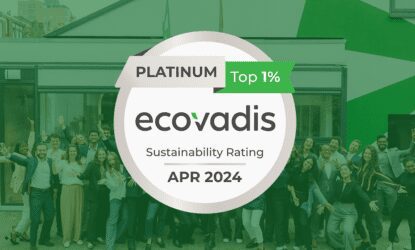 Carbon footprints decoded: A collaborative approach to climate action
Carbon footprints decoded: A collaborative approach to climate action
Achieving net zero emissions is a critical objective for organisations committed to combating climate change. This process involves balancing the greenhouse gases emitted into the atmosphere with an equivalent amount removed, thereby stabilising global temperatures. Here is a structured approach to guide organisations through the journey toward net zero implementation.
1. Establish a baseline emissions inventory
Objective: Understand your current emissions profile.
- Conduct a comprehensive assessment: Map emissions across all three scopes:
- Scope 1: Direct emissions from owned or controlled sources.
- Scope 2: Indirect emissions from purchased electricity.
- Scope 3: Other indirect emissions across the value chain.
- Disclose publicly: Document and disclose your emissions data annually, including historical data for comparison. This transparency builds credibility and accountability.
2. Set Science-Based Targets to set the vision
Objective: Define ambitious targets aligned with global climate goals.
- Align with global standards: Net zero target setting should be consistent with the Intergovernmental Panel on Climate Change (IPCC) recommendations to limit global warming to 1.5 degrees Celsius. This involves reducing greenhouse gas emissions significantly by 2030 and achieving net zero by 2050.
- Set interim milestones: Establish short-term goals to ensure progress toward long-term objectives, allowing for adjustments based on performance.
3. Develop and plan a strategic roadmap
Objective: Create a comprehensive plan to achieve net zero.
- Identify key actions: Outline specific measures for reducing emissions, such as transitioning to renewable energy, enhancing energy efficiency, and engaging your supply chain.
- Allocate resources: Ensure that adequate resources are allocated for implementing sustainable practices and technologies.
- Assign responsibilities: Designate team members accountable for executing each part of the plan, fostering ownership and commitment.
4. Implement and execute emission reduction strategies
Objective: Take concrete actions to minimise greenhouse gas emissions.
- Transition to renewable energy: Invest in renewable energy sources like solar and wind to replace fossil fuels.
- Enhance energy efficiency: Optimize operations and processes to reduce energy consumption and waste.
- Engage suppliers and partners: Collaborate with suppliers to encourage sustainable practices throughout the supply chain.
5. Supplier engagement and communication
Objective: Build trust and engagement by sharing your sustainability journey.
- Regular Reporting: Share updates on emissions reductions and sustainability efforts with stakeholders, including employees, customers, and investors.
- Enhance Brand Reputation: Use your commitment to net zero as a competitive advantage by showcasing your sustainability initiatives and achievements.
How can Nexio Projects help you?
Achieving net zero emissions is a challenging but attainable process requiring dedication, collaboration and continuous improvement. By following these steps, Nexio Projects can help your organisation play a pivotal role in global climate action while enhancing their resilience and reputation in a sustainability-driven market. The journey may be complex, but the rewards – for both the planet and your organisation – are immeasurable.
Ready to learn more about net zero emissions? Stay informed on the latest news and actionable strategies by subscribing to our newsletter.











